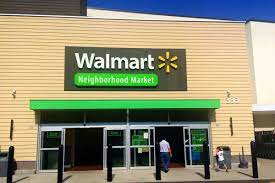Having recently visited Walmart’s neighborhood market, I can attest to its ability to provide fresh fruits and vegetables to communities that are often food deserts. It’s also a great place to pick up food staples for the entire family. Compared to a supercenter, the neighborhood market is smaller, but it’s growing in size.
It’s a grocery store
Often located in urban areas, Walmart Neighborhood Markets offer a smaller alternative to Walmart Supercenters. Walmart Neighborhood Markets offer a full grocery department, pharmacy, deli, bakery, and pet items. They also offer free store pickup for online orders.
The Neighborhood Market is about one-fifth the size of a Walmart Supercenter, and is primarily a grocery store. It focuses on fresh produce, organic items, and household items.
It’s been around since 1998. They’re in more than 700 locations across the country. Wal-Mart has plans to expand the Neighborhood Market format. It will open one in Lacey in early 2015.
The Neighborhood Market has already outsold Wal-Mart’s overall growth. The Neighborhood Markets are much smaller, but they have experienced same-store sales growth over the past five years.
These smaller stores are more accessible than Supercenters, but they also take advantage of food deserts. The Neighborhood Markets are located in former Food Lion locations.
Walmart has been a leader in supporting local charities. They’ve donated to organizations such as the Boys and Girls Clubs of Thurston County. They also support the Arthritis Foundation.
It’s smaller than a supercenter
Unlike a Supercenter, a Walmart Neighborhood Market store is not only smaller in size, but it is also more community oriented. It features fresh produce, bakery items, a full-service deli, a pharmacy and a gas station. It also offers a wide variety of products to meet the needs of shoppers, including health and beauty products, paper goods and pet food.
Walmart Neighborhood Market stores are located in both urban and suburban areas. They are typically around a fifth the size of a Supercenter. However, they are not the only format that Walmart is expanding. It plans to open 500 Neighborhood Market stores within the next 18 months.
Wal-Mart has redesigned the business model for smaller stores. Its Neighborhood Market stores compete directly with discount/dollar stores, drug stores, and even smaller grocery stores.
The neighborhood markets were designed as a way for Walmart to connect with customers. According to company officials, it’s a way to offer an alternative to larger supermarkets.
It’s taking advantage of food deserts
Almost half of the population in America lives more than a half-mile from the nearest full-service grocery store. They have a higher rate of obesity and health issues associated with diet-related chronic diseases.
A food desert is an urban or rural area with limited access to healthy, fresh foods. The Department of Agriculture defines urban food deserts as low-income areas with low access to food resources. Generally, these areas have high poverty rates and are in dense urban areas.
The Food Trust is a non-profit organization that provides strategic guidance to the Kansas Healthy Foods Initiative and works to address urban food deserts. It also provides educational programming to communities. It works with local food producers to promote locally-grown foods.
The United States has approximately 23.5 million food deserts. Some studies have estimated that up to half of all low-income neighborhoods are food deserts. They have significant economic and health implications.
The Department of Agriculture uses a combination of income and access measurements to identify food deserts. It defines a food desert as a census tract with at least 20 percent poverty. In addition, the area has to be more than a half-mile from a large grocery store.
It’s growing
Whether you’re looking for a convenient place to get your groceries or just a place to shop, you’ll find everything you need at the Neighborhood Market. This smaller store offers fresh produce, meat, pharmacy, and other essentials. Its size is usually about half the size of a Wal-Mart Super Center. Read more on TodayTimeNews.
The Neighborhood Market concept first appeared around 1998, when Walmart was looking for an alternative to its Super Centers. The stores were radically different in size from Super Centers, and were designed to serve the neighborhood where they were located. Wal-Mart has since opened more than 600 Neighborhood Markets, with plans to double the number over the next few years. They’ve also added a number of “express” stores in Kansas in the last two years. These stores are smaller than Neighborhood Markets, and serve as mini-grocery stores for rural areas.
These stores are not designed to be full-service, but instead focus on the center of the store, like a traditional convenience store. They don’t carry prepared meals or full-size Walmart items, but they do have a decent selection of produce, meat, and pharmacy.











